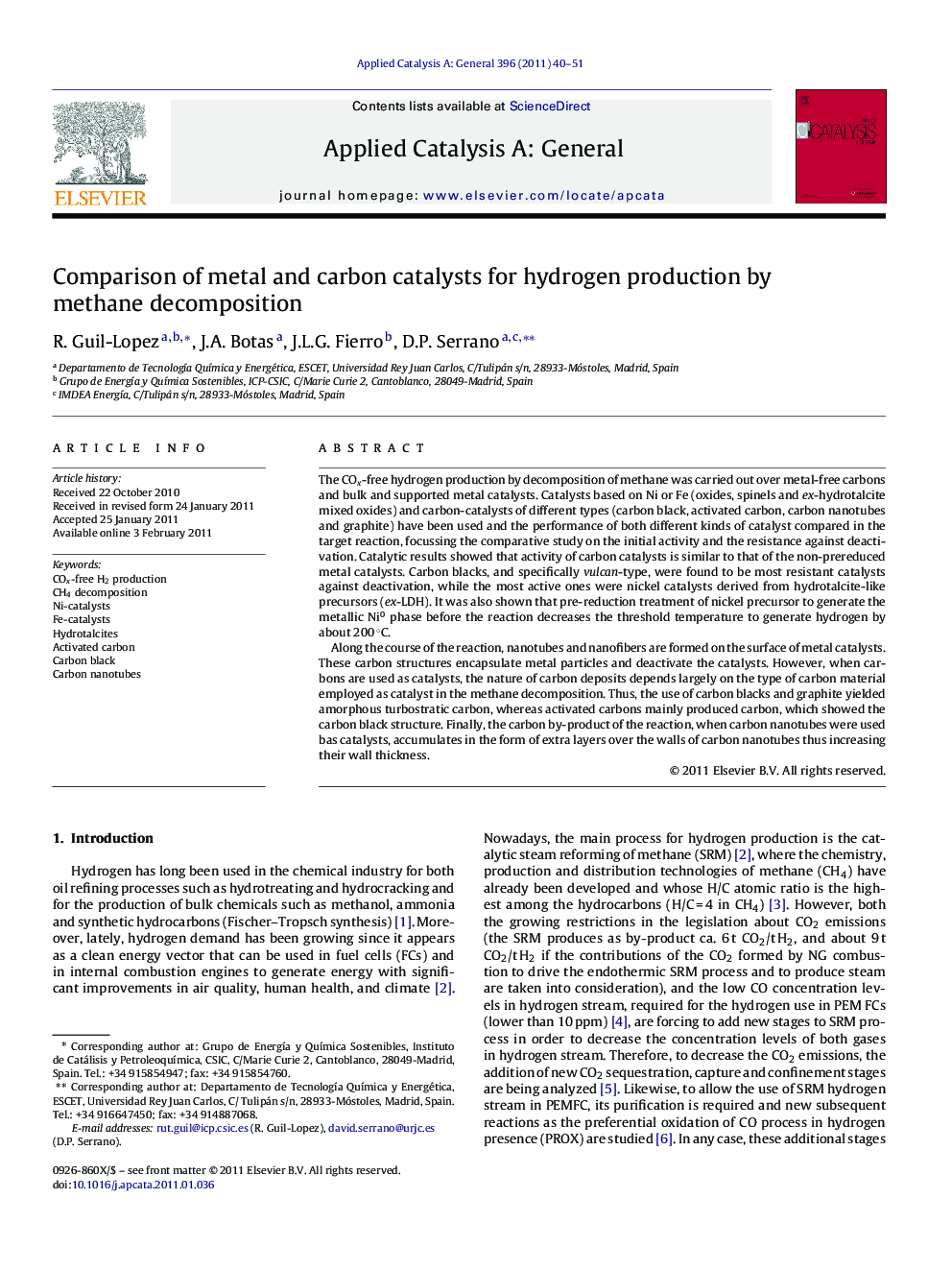| کد مقاله | کد نشریه | سال انتشار | مقاله انگلیسی | نسخه تمام متن |
|---|---|---|---|---|
| 41678 | 45896 | 2011 | 12 صفحه PDF | دانلود رایگان |

The COx-free hydrogen production by decomposition of methane was carried out over metal-free carbons and bulk and supported metal catalysts. Catalysts based on Ni or Fe (oxides, spinels and ex-hydrotalcite mixed oxides) and carbon-catalysts of different types (carbon black, activated carbon, carbon nanotubes and graphite) have been used and the performance of both different kinds of catalyst compared in the target reaction, focussing the comparative study on the initial activity and the resistance against deactivation. Catalytic results showed that activity of carbon catalysts is similar to that of the non-prereduced metal catalysts. Carbon blacks, and specifically vulcan-type, were found to be most resistant catalysts against deactivation, while the most active ones were nickel catalysts derived from hydrotalcite-like precursors (ex-LDH). It was also shown that pre-reduction treatment of nickel precursor to generate the metallic Ni0 phase before the reaction decreases the threshold temperature to generate hydrogen by about 200 °C.Along the course of the reaction, nanotubes and nanofibers are formed on the surface of metal catalysts. These carbon structures encapsulate metal particles and deactivate the catalysts. However, when carbons are used as catalysts, the nature of carbon deposits depends largely on the type of carbon material employed as catalyst in the methane decomposition. Thus, the use of carbon blacks and graphite yielded amorphous turbostratic carbon, whereas activated carbons mainly produced carbon, which showed the carbon black structure. Finally, the carbon by-product of the reaction, when carbon nanotubes were used bas catalysts, accumulates in the form of extra layers over the walls of carbon nanotubes thus increasing their wall thickness.
.Figure optionsDownload high-quality image (200 K)Download as PowerPoint slideResearch highlights
► The first comparative study between metals and carbons as catalysts in CH4 decomposition to produce H2.
► The most active catalyst was Ni mixed oxides from hydrotalcites (Ni–ex LDHs).
► The most stable catalysts against deactivation were carbon blacks, mainly the CB-vulcan.
► Carbon vulcan produces 4 fold more H2 than the most active and stable metal catalysts (Ni–ex LDHs).
Journal: Applied Catalysis A: General - Volume 396, Issues 1–2, 15 April 2011, Pages 40–51